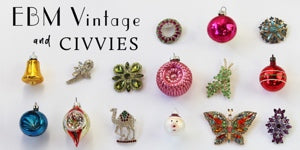“Don’t burn the candle at both ends,” people started telling each other in the 1700s. Back then, it was a more literal warning not to squander precious resources, conceived at a time when the candle wasn’t a thing to be taken lightly.
According to Ernest H. Baldwin’s 1902 book Stories of Old New Haven, early colonists used both pine knot—pine wood rich with flammable resin—and tallow candles for nighttime light. “[P]ine knot was a very dirty and smoky thing, but many an old Puritan minister wrote his long sermons with the aid of such a light,” Baldwin reports. Candle-making, meanwhile, was a regular household duty, he says. “Every bit of tallow was carefully saved and melted. The candle wicks were made of hemp or cotton, and were dipped in the hot tallow, then taken out and allowed to cool. This was done over and over again until the candle was of the right size. Sometimes the melted tallow was poured into molds. All candles were carefully laid away and sparingly used.”
In July of 1779, when British troops famously invaded New Haven, many residents stashed their valuables and fled, including, as Baldwin has it, one woman who “tried to save her tallow candles but the hot July sun melted them in her hands leaving nothing but the wicks.” By 1856, when John W. Barber wrote his History and Antiquities of New Haven, Conn., candles could be purchased in local shops, but many families continued to make their own. He recalls that “some [candles] were made of pot fat, which contained a little salt, which caused a continued decrepitation, or sputtering.”
sponsored by
In July of 1779, when British troops famously invaded New Haven, many residents stashed their valuables and fled, including, as Baldwin has it, one woman who “tried to save her tallow candles but the hot July sun melted them in her hands leaving nothing but the wicks.” By 1856, when John W. Barber wrote his History and Antiquities of New Haven, Conn., candles could be purchased in local shops, but many families continued to make their own. He recalls that “some
The advent of gaslight changed the candle’s place in the home. According to Barber, the New Haven Gas Company was chartered in 1847, and by December of 1855, there were 189 “Public Lamps” in the city—making candles more expendable. In her 1932 memoir My Old New Haven and Other Memories, Jane Bushnell Shepherd recalls the 1860s—era “presidential elections of my youth, when spectacular torchlight processions were the vogue. When a Republican parade came down College Street, we—being of that persuasion—lit every gas jet in the house, put extra candles in the windows, and stood proudly on the front porch, but when the Democrats paraded by with flaring torches we turned off all the lights, making the house as dark as a pocket, and peered jealously out from behind the curtains.”
In local homes today, it’s popular to put electric candles in windows during the holidays, a modern American tradition that purportedly radiated from Colonial Williamsburg, Virginia, starting in the 1930s. Several decades earlier, in the second half of the 19th century, candles had come to play a different, particularly dangerous holiday role as Christmas tree lights, a practice that melted away after Thomas Edison’s partner, Edward Johnson, “hand-wired 80 red, white and blue light bulbs and wound them around his Christmas tree” in 1882.
Perhaps ironically, today the number of candles, available in every imaginable scent and size and mostly used for pampering or decoration, has waxed even as their utility has waned. But this time of year, candles regain some of their historic importance, and not just as popular holiday gifts. As Jews light their menorahs, Christians light their Advent wreaths and celebrants of Kwanzaa light their kinaras, we’re reminded of the simple beauty and symbolic weight of the tiny, flickering flames that once gave dark nights some of their only earthly lights.
Written by Kathy Leonard Czepiel. Image 1, photographed during a compline service at Christ Church, by Dan Mims. Image 2, photographed during a traditional candle-making session in The Whitney Workshop at Eli Whitney Museum, by Kathy Leonard Czepiel. Image 3, photographed during a session of New Haven Ecstatic Dance, by Daniel Shkolnik.









